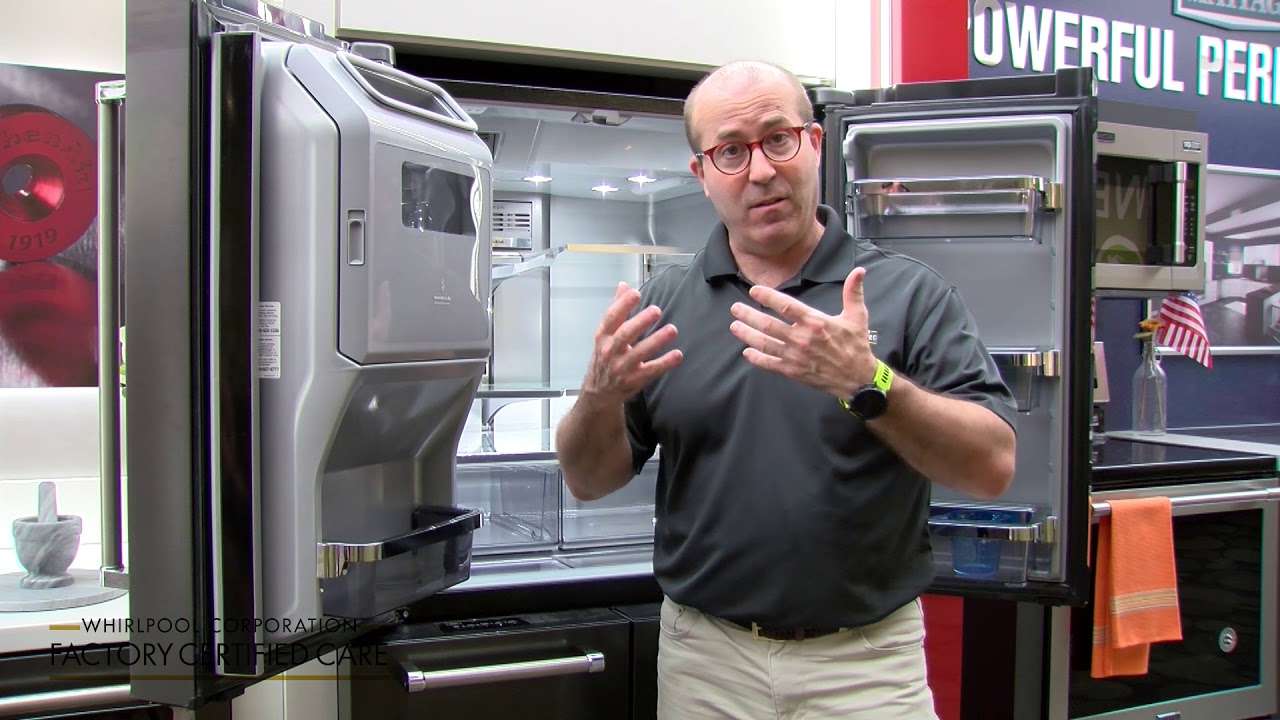Experiencing a sluggish whirlpool refrigerator water dispenser slow after filter change is a surprisingly common issue, leaving many homeowners frustrated. This situation often arises immediately after replacing the water filter, leading to suspicion that the new filter is somehow defective. However, the problem is rarely the filter itself but rather air trapped within the system or an installation issue. Understanding the underlying causes and knowing the troubleshooting steps can help you restore optimal water flow and enjoy the convenience of your refrigerator’s water dispenser once again. Let’s explore the potential culprits and provide practical solutions to tackle this issue head-on and get your whirlpool refrigerator water dispenser slow after filter change working as expected.
Understanding the Potential Causes
A slow water dispenser after a filter change can stem from several factors. Here’s a breakdown of the most common culprits:
- Air Trapped in the System: This is the most frequent reason. When you replace the filter, air can enter the water lines, creating an airlock that restricts water flow.
- Incorrect Filter Installation: Improperly installed filters might not create a proper seal, leading to reduced water pressure.
- Clogged or Partially Blocked Filter: Although new, a filter could, in rare cases, be partially blocked due to manufacturing defects.
- Water Line Issues: Kinks or obstructions in the water line can significantly impact water flow.
- Low Water Pressure: The incoming water pressure to your refrigerator may be insufficient.
Troubleshooting and Solutions
Now, let’s dive into the practical steps you can take to diagnose and fix the slow water dispenser:
Purging Air from the System
This is usually the first and most effective solution. Here’s how to do it:
- Dispense water continuously for 2-3 minutes. This will help force out any trapped air.
- Pause for a few minutes, then repeat the dispensing process.
- Continue this cycle until the water flows at a normal rate.
Checking the Filter Installation
- Remove the filter and re-install it carefully, ensuring it clicks securely into place.
- Refer to your refrigerator’s user manual for specific instructions on filter installation.
Inspecting the Water Line
Examine the water line running to your refrigerator for any kinks or sharp bends. Straighten out any kinks and ensure the line is not pinched or obstructed.
Verifying Water Pressure
Check the water pressure to your home. If it’s consistently low, you may need to address the issue with your home’s plumbing system. You can contact a plumber to assess your home’s overall water pressure.
Consider the Filter Itself
While rare, a defective filter can sometimes be the issue. If you’ve tried all other troubleshooting steps, consider replacing the new filter with the old one (if it’s not too old or heavily used) to see if the water flow improves. This can help isolate the problem to the filter itself.
If you’ve exhausted all these troubleshooting steps and your whirlpool refrigerator water dispenser slow after filter change is still performing poorly, it’s best to consult a qualified appliance repair technician. They can diagnose more complex issues and provide professional repairs.
PREVENTATIVE MEASURES FOR FUTURE FILTER CHANGES
To minimize the chances of encountering a slow water dispenser after future filter changes, consider these preventative measures:
– Pre-Soak the Filter: Some manufacturers recommend soaking the new filter in water for a few minutes before installation. This can help pre-saturate the filter media and reduce air pockets.
– Slow and Steady Installation: Install the filter slowly and deliberately, allowing air to escape as you push it into place.
– Consult the Manual: Always refer to your refrigerator’s user manual for specific filter installation instructions and recommendations.
– Regular Filter Changes: Adhere to the recommended filter replacement schedule (typically every 6 months) to prevent buildup and maintain optimal water flow.
UNDERSTANDING WATER FILTER TYPES AND COMPATIBILITY
Different refrigerators utilize different types of water filters. Ensure you are using the correct filter type specified for your Whirlpool refrigerator model. Using an incompatible filter can not only lead to poor water flow but also potentially damage your refrigerator’s water system. Double-check the model number compatibility listed on the filter packaging before purchasing and installing.
LONG-TERM SOLUTIONS FOR PERSISTENT LOW PRESSURE
If you consistently experience low water pressure, even after addressing potential issues like kinks in the water line, you might consider installing a booster pump. A small, in-line water pressure booster pump can increase the water pressure specifically to your refrigerator, ensuring optimal water flow to the dispenser and ice maker. Consult with a plumber to determine if a booster pump is a suitable solution for your needs.
Remember, maintaining your refrigerator’s water filtration system is crucial for both water quality and the longevity of your appliance. By understanding the potential causes of a slow water dispenser after a filter change and implementing these troubleshooting and preventative measures, you can keep your water flowing freely and enjoy the convenience of your refrigerator for years to come. The process of changing the filter should be straightforward and not result in any performance issues. If you carefully follow these guidelines, you can avoid a whirlpool refrigerator water dispenser slow after filter change from becoming a regular headache.







